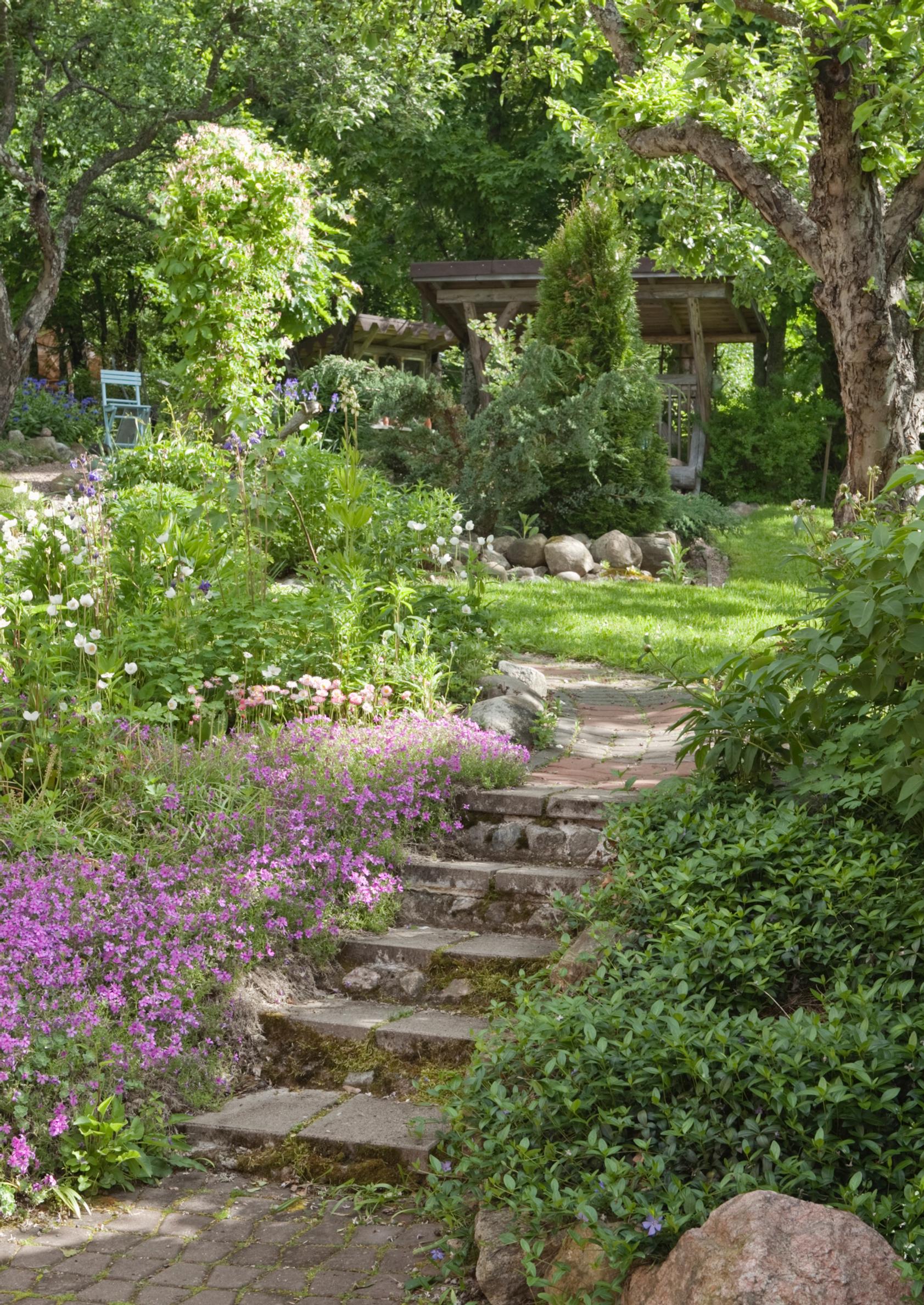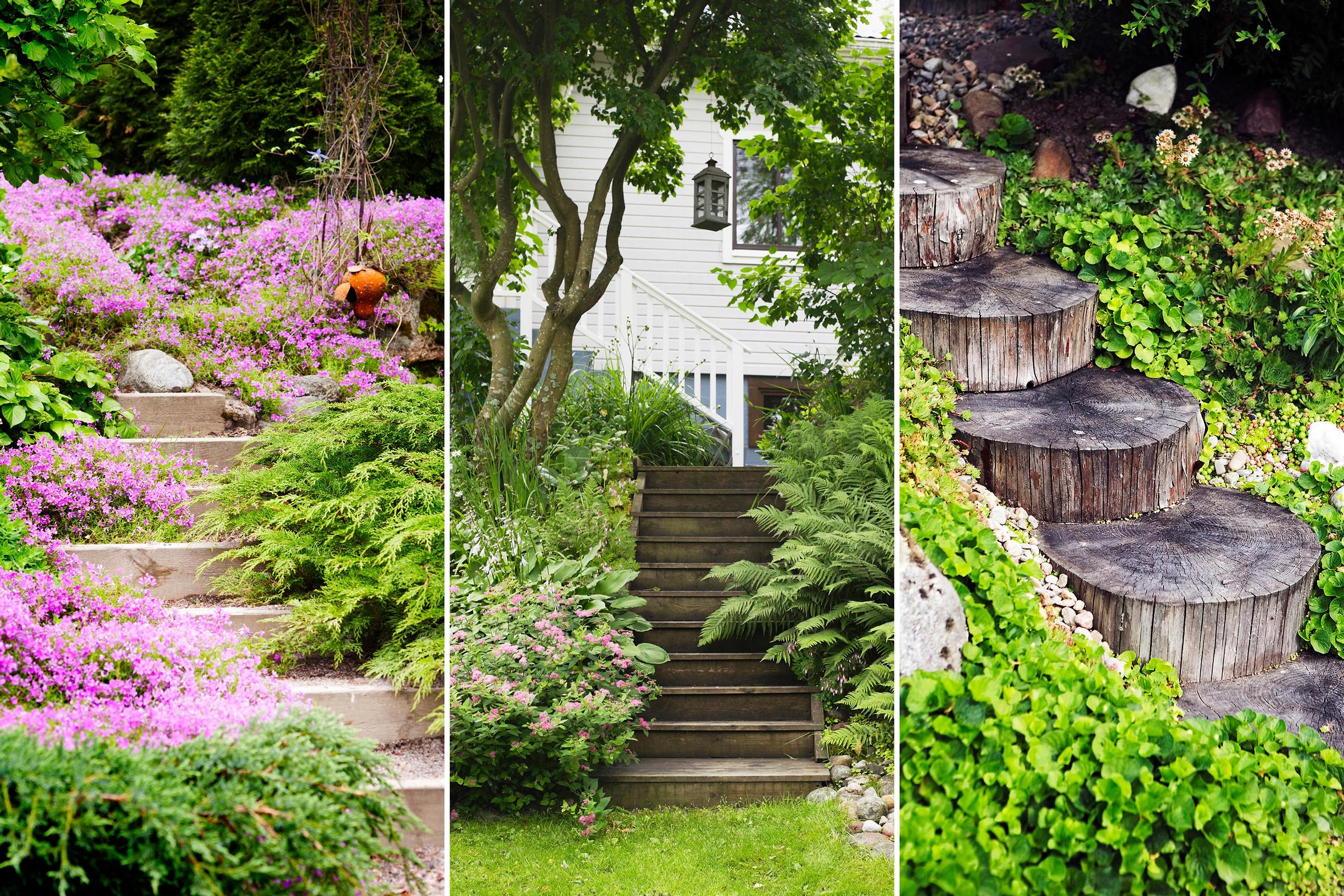
10 stunning garden step solutions from home gardens
Long, short, straight, or elegantly curved? Garden steps make it easier to get around but can also be a visual delight. Check out the loveliest and most inventive wooden, concrete, and stone steps.
Not only for climbing
Good steps are safe, beautiful, durable, and fit harmoniously within the landscape and buildings. When choosing the material, think about whether the steps will be used in winter too, in which case they need to endure snow clearing, ice removal, and sanding. Do you want to sit on the steps in summer? Then a warm wooden surface could be an appealing choice.

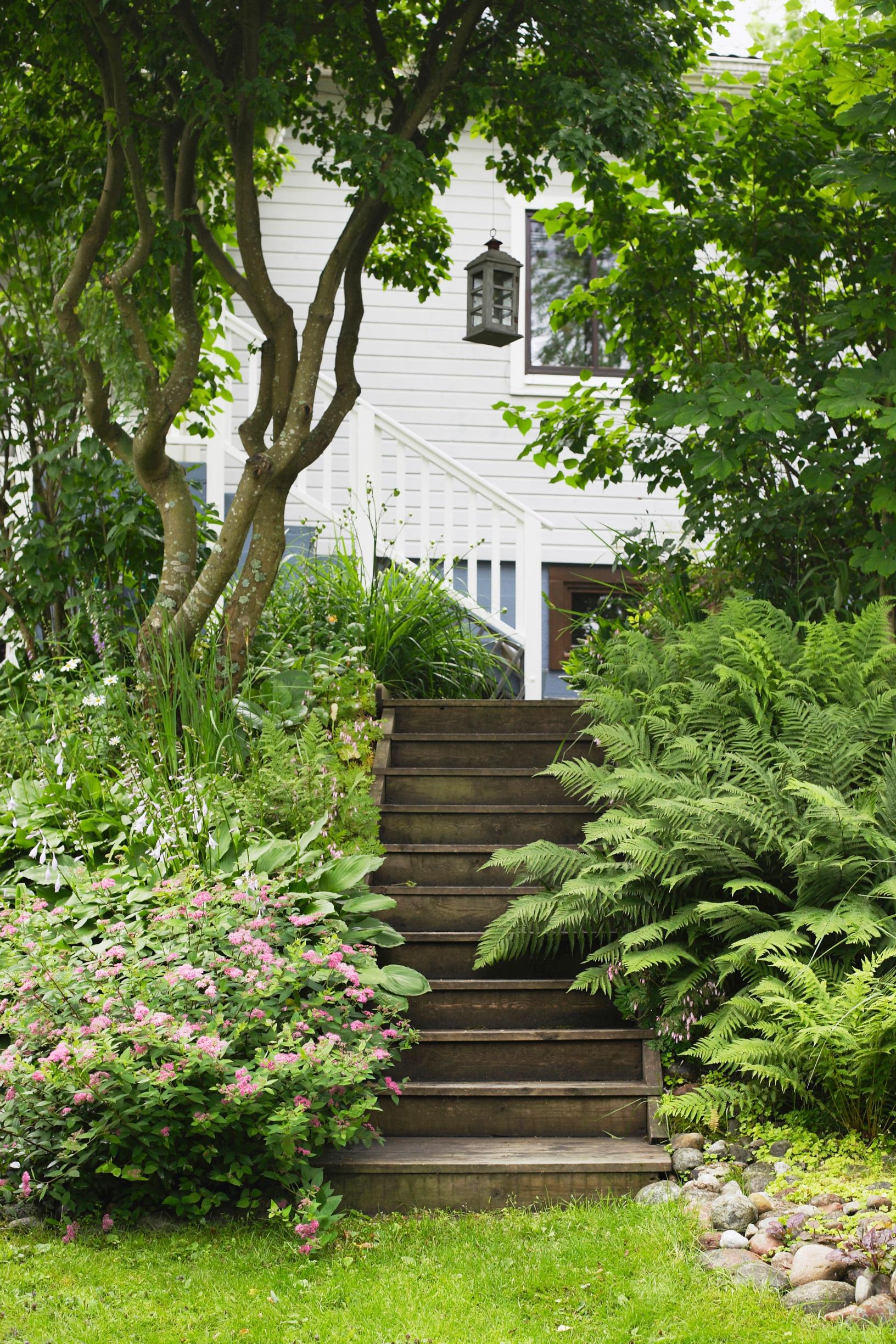
Eye-catchers
The shape of these steps was defined by the plants. The combination of the forest-green Siberian cypress and bright magenta creeping phlox is breathtaking. Both plants are well-suited to a slope, thrive in rocky soil, and are not picky about the growing medium. A climbing hydrangea is stretching toward the steps in the upper left corner.

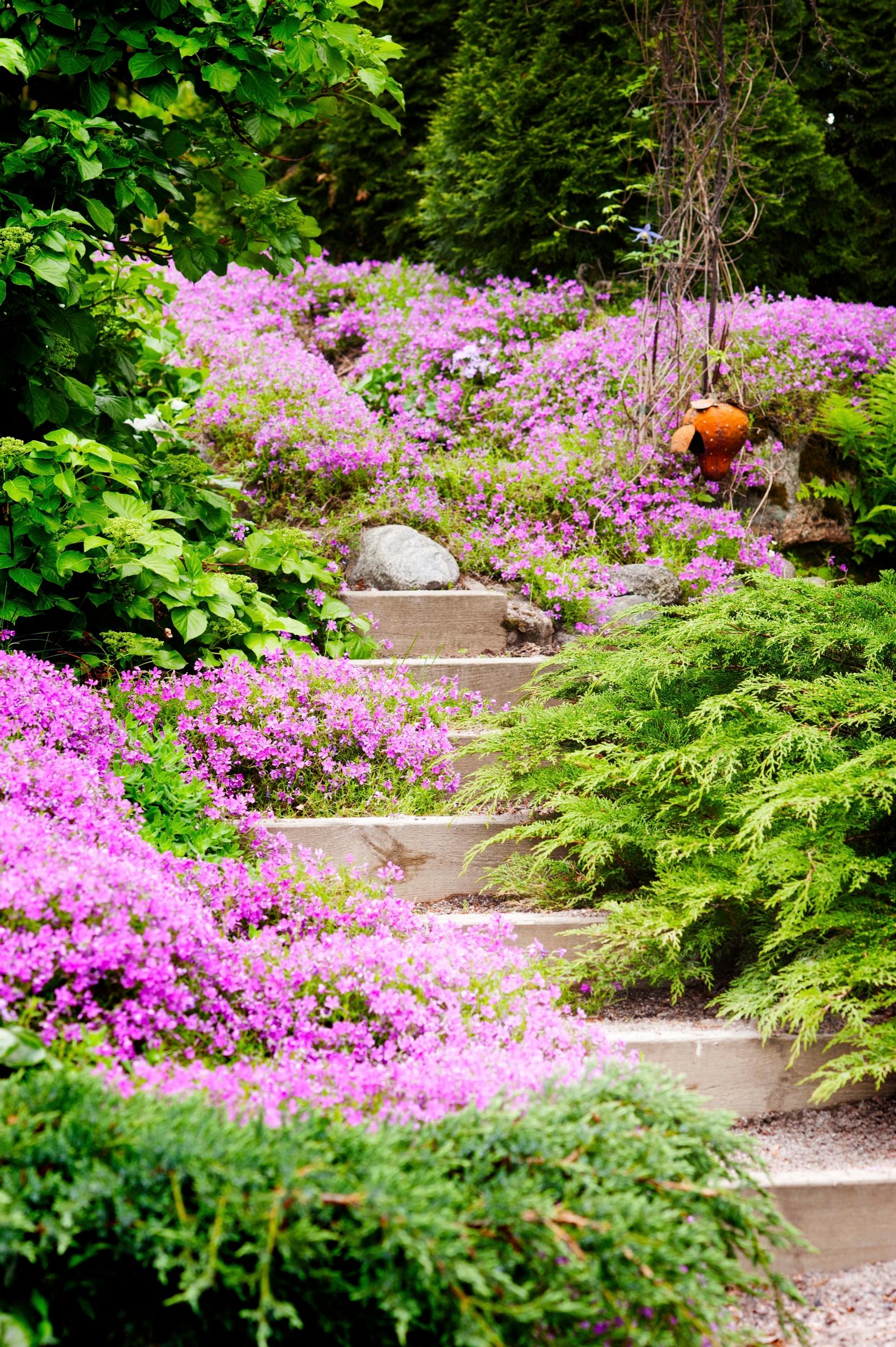
A couple is enough
Even small differences in elevation and just a couple of steps add rhythm to the garden. The groundcover flowing over these wooden steps is Geranium cantabrigiense. Red bistort and bee balm grow behind it. The other side of the steps boast the Japanese forest grass, whose waterfall-like growth habit is especially magnificent. You can explore this wonderful prairie garden in more detail here [in Finnish].

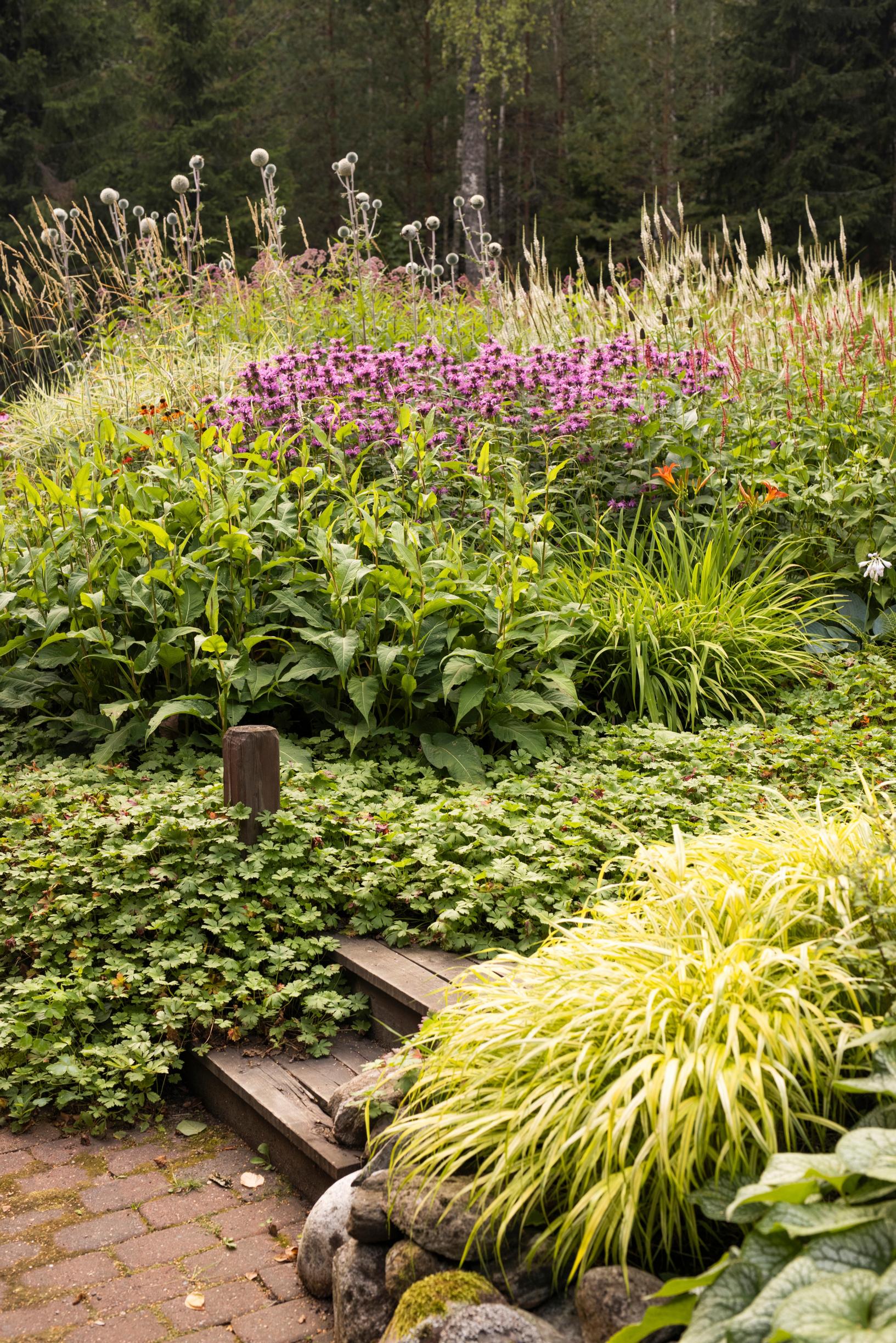
Durable and beautifully patterned
Natural stones with a lively surface often make the most beautiful steps, provided you find stones with at least one flat side. To ensure the steps are safe to use, they must be firmly secured to the ground. Heavy boulders require machinery, such as a digger, while smaller stones can be transported with a hand truck.

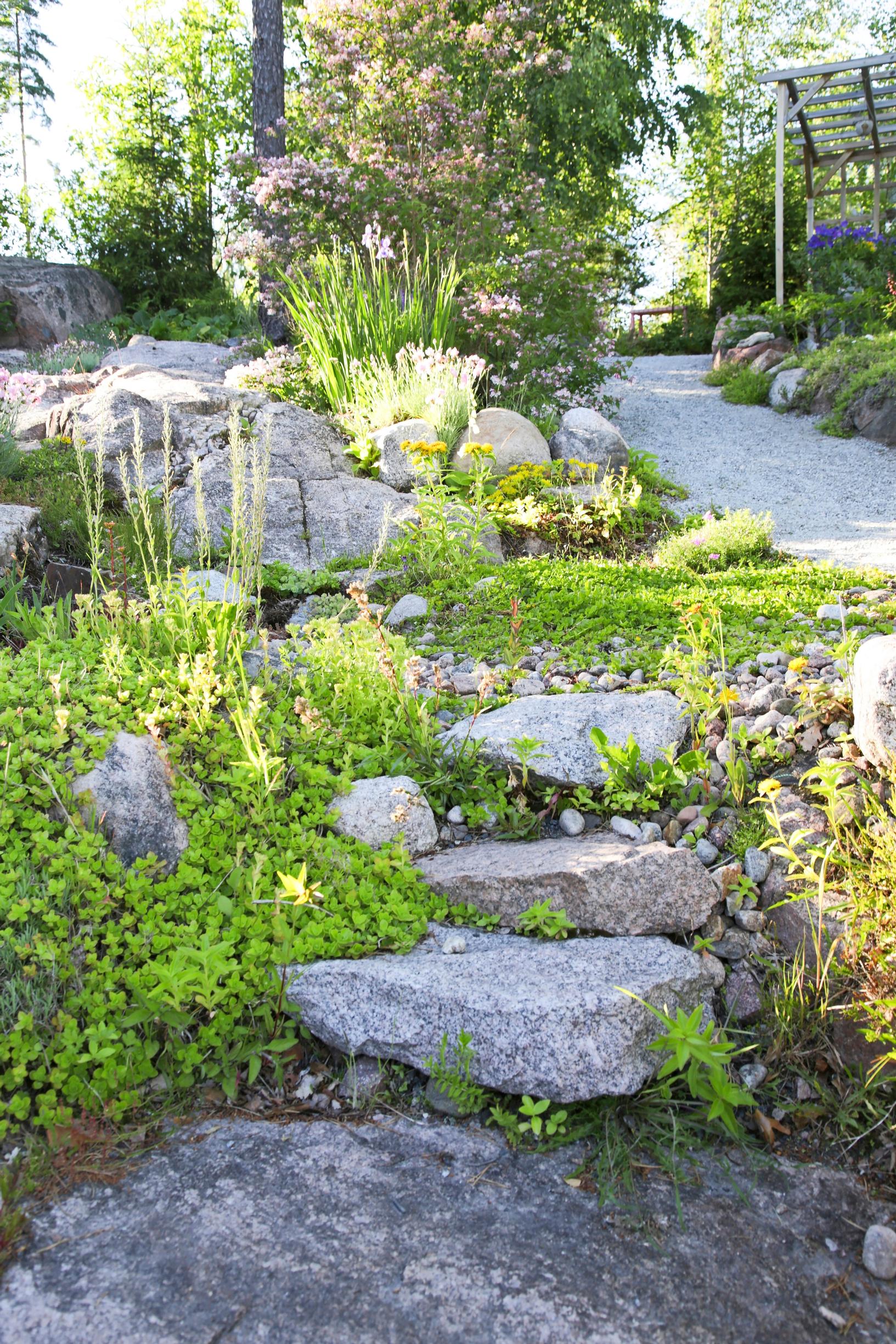
Take a breather
This steep slope was tamed with stone terraces, decks, and steps, resulting in a lush garden that is easy to move around and relax in. Handrails are crucial in places with a risk of falling. The kitchen garden on the left is truly ingenious: four long rows of raised beds are staggered on the slope, with maintenance paths running between them.

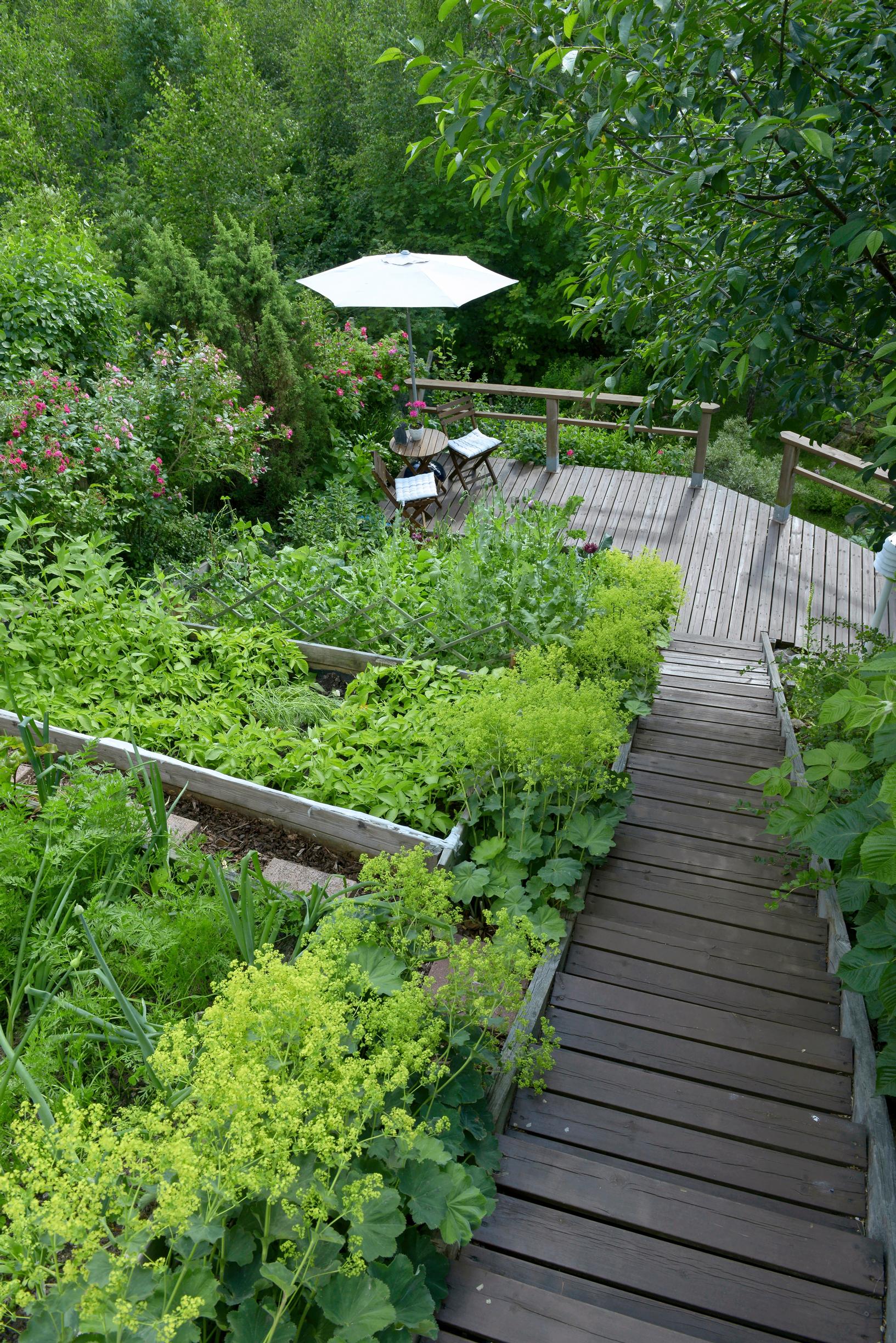
It’s a good idea to build a couple of wider resting landings if there are long stretches of steps.
For disc enthusiasts
Narrow steps suit areas where there’s no need to pass someone side by side or carry large loads. The owner of this garden built fantastic round steps from larch log discs. The ground is covered with marsh violet that had been growing on the property naturally; the owners also used it to edge flower beds. These beautiful steps are not the only clever invention in this garden: you can read more about it here [in Finnish].

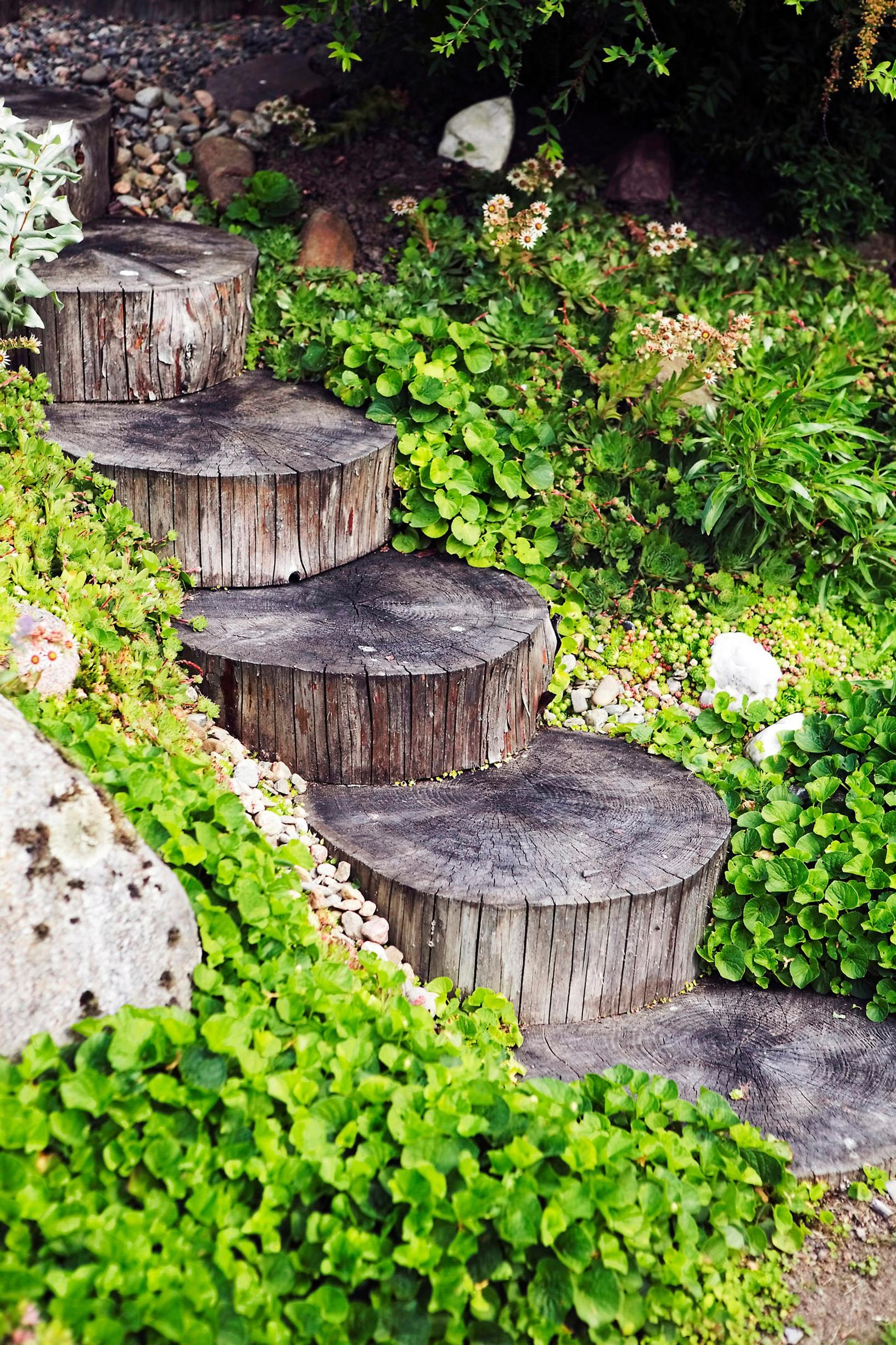
A natural look
The garden designer wanted steps that would blend seamlessly in the greenery rather than hover above it. The thick wood logs were secured into the ground with rebar. The paths and steps are covered in gravel. Find this playful garden that skillfully experiments with leaf shapes and colors here.

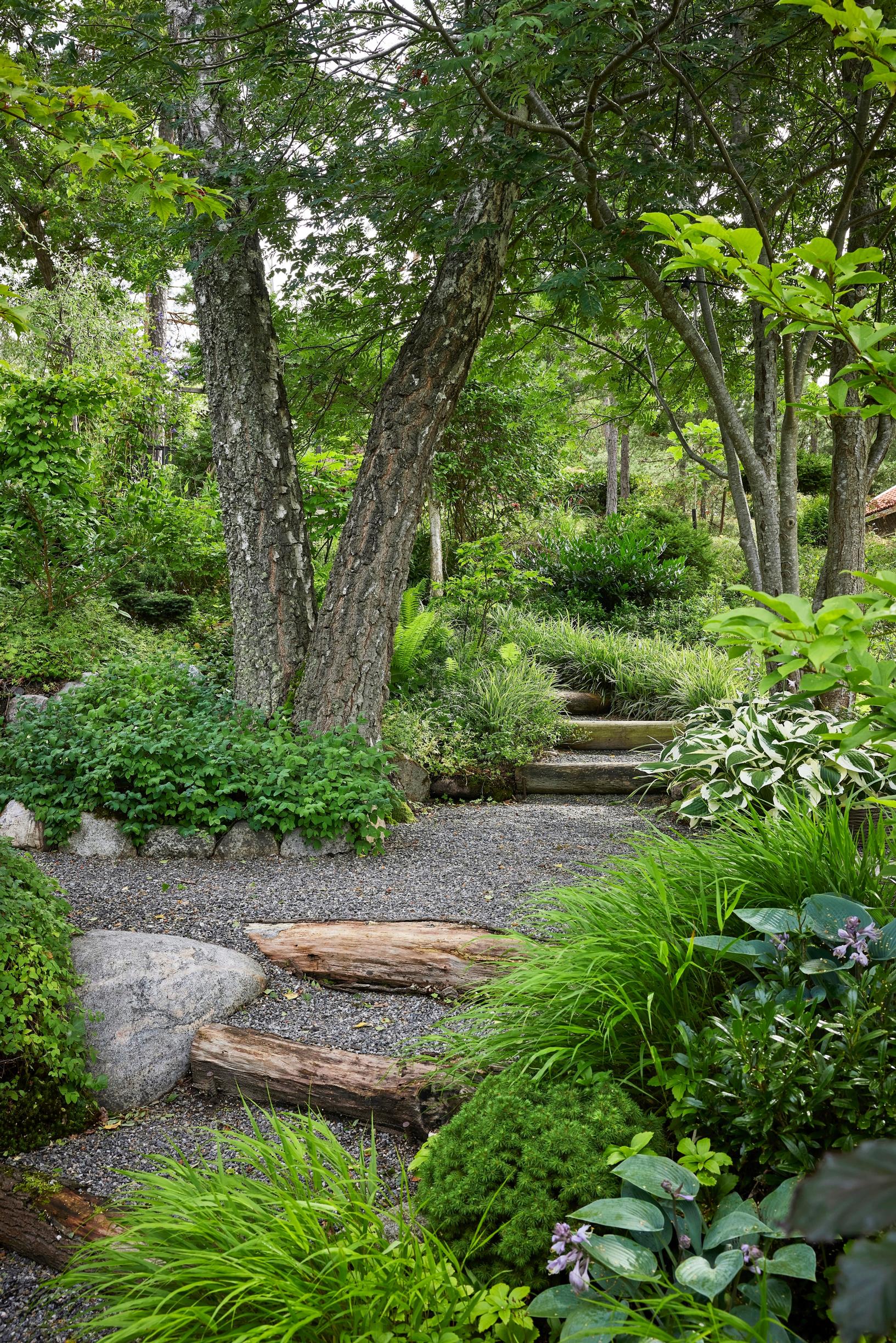
A cube puzzle
Granite setts are a convenient and stylish option for both patios and steps. It’s a good idea to set a long curb stone at the edge of each step to keep the setts in place. These splendid steps, edged with hostas, can be found in the garden of an old log house [in Finnish].

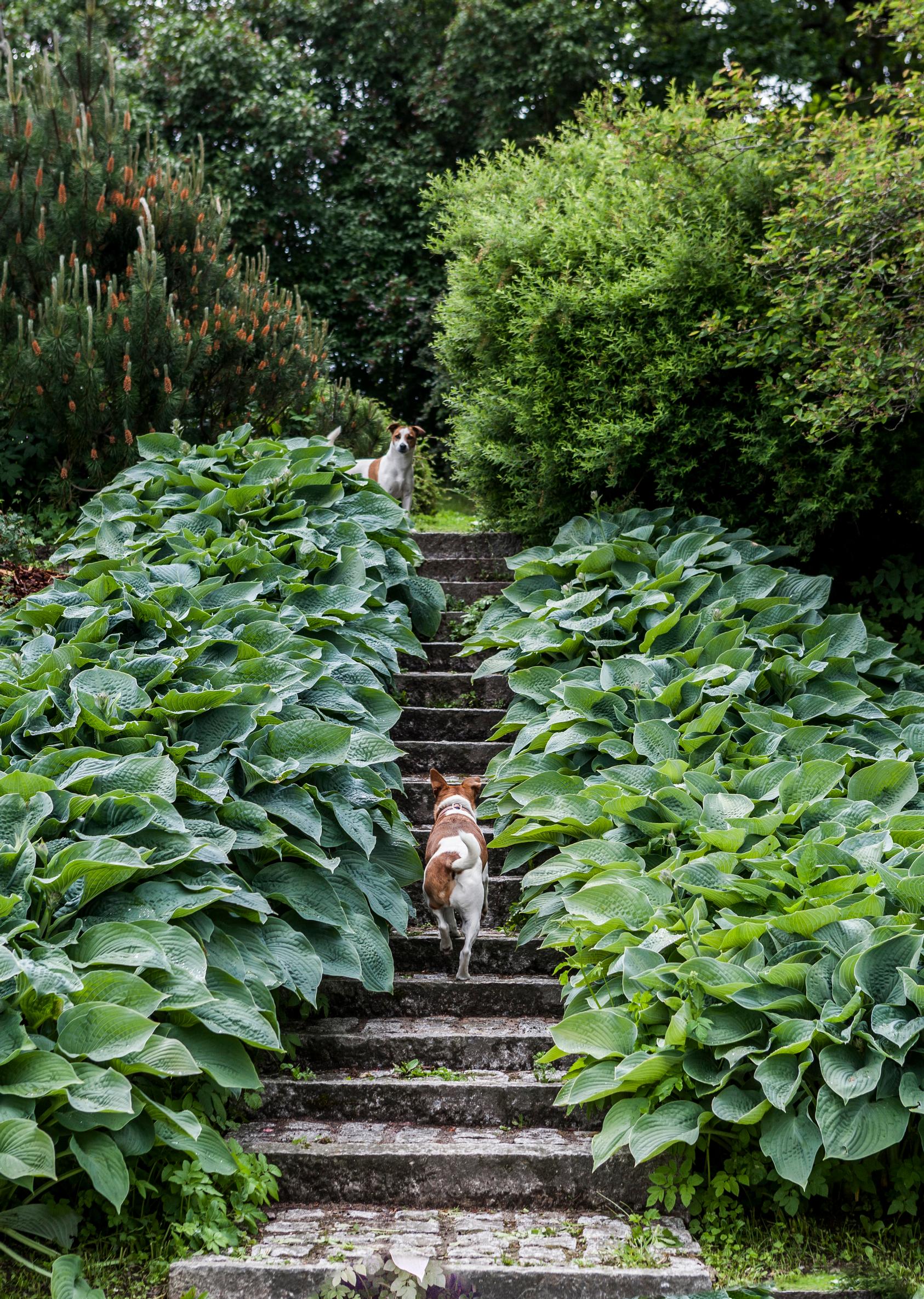
Cast in a curve
Concrete steps work beautifully against a bedrock surface. Each step can be unique and follow the rock’s contours. Over time, stone steps develop a lovely patina of moss, which is already forming at the top of the stairs here.

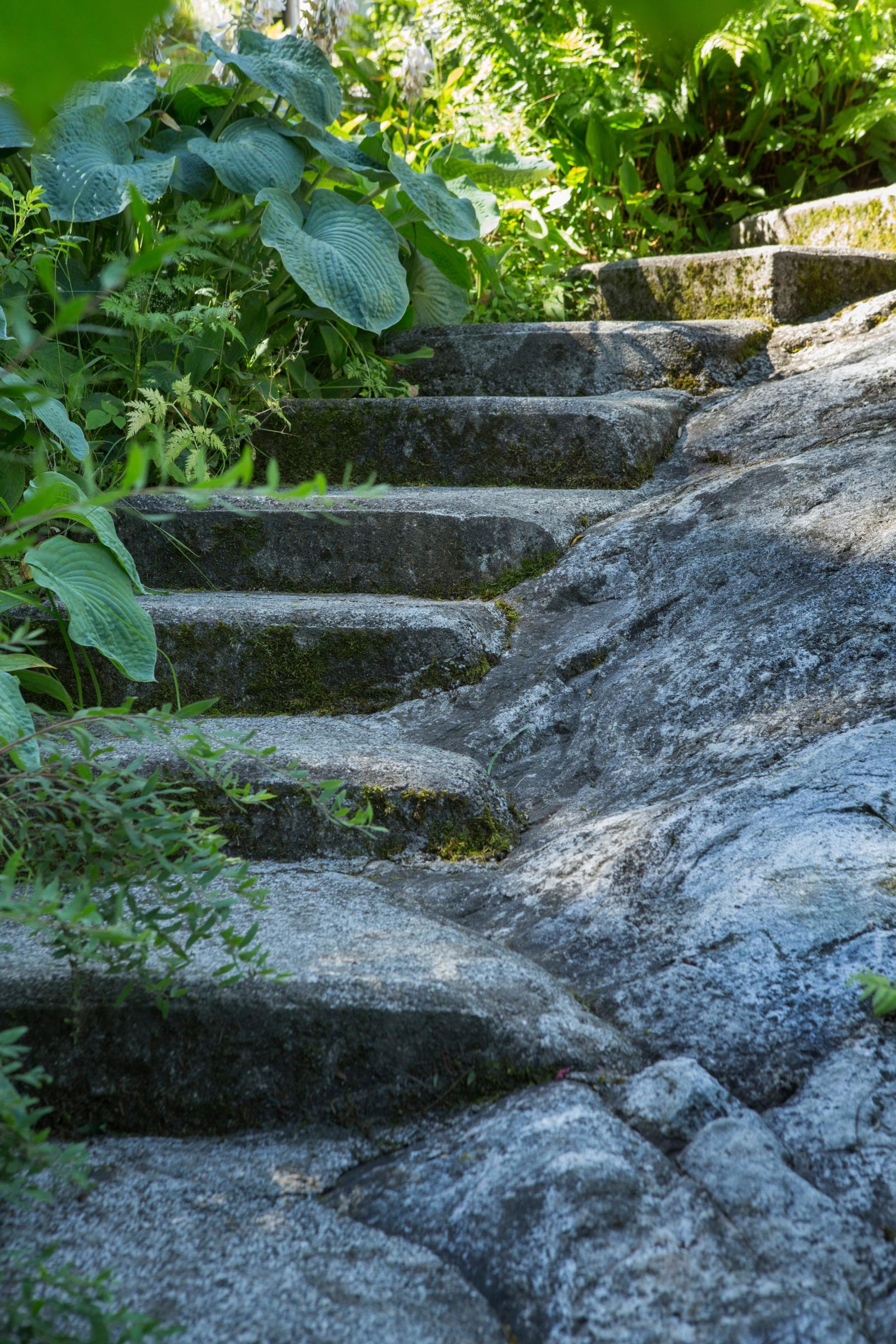
Repurposing leftover stones
If you don’t need long steps, consider building them from leftover materials. You can freely use different types of stones together. Only ten concrete slabs were needed for these steps. You can often find small quantities of stone for free by asking around on social media recycling groups.

